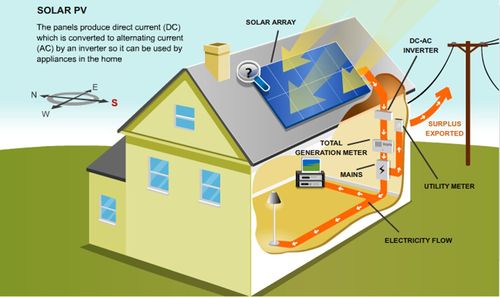If you have any gueries, get in touch today! Don't hesitate, We try to take the extra step for our customer satisfaction.
Date:17/10/2023

Solar energy is the energy generated by the continuous nuclear fusion reaction process of sunspots inside or on the sun's surface. Solar energy has the advantages of sufficient resources, long life, wide distribution, safety, cleanness, and reliable technology. Since solar energy can be converted into many other forms of energy, it has a wide range of applications. In terms of heat utilization, there are solar greenhouses, drying and solar cookers, solar water heaters, etc. After years of development, solar power generation has also made great progress.
The classification of solar power generation
1. Solar photovoltaic power generation
Solar photovoltaic power generation refers to a power generation method that directly converts light energy into electrical energy without going through a thermal process. It includes photovoltaic power generation, photochemical power generation, light induction power generation and photobiological power generation. Photovoltaic power generation is a direct power generation method that uses solar-grade semiconductor electronic devices to effectively absorb solar radiation energy and convert it into electrical energy. It is the mainstream of solar power generation today.
2. Solar thermal power generation
The power generation method that converts solar radiation energy into electrical energy through water or other working fluids and devices is called solar thermal power generation. First convert solar energy into thermal energy, and then convert thermal energy into electrical energy. There are two conversion methods: one is to directly convert solar thermal energy into electrical energy, such as thermoelectric power generation of semiconductor or metal materials, thermal electrons and thermal ions in vacuum devices power generation, alkali metal thermoelectric conversion, and magnetic fluid power generation; another way is to use solar thermal energy to drive a generator to generate electricity through a heat engine (such as a steam turbine), which is similar to conventional thermal power generation, except that the heat energy does not come from fuel, but from solar.
The power generation device
Solar power generation is a device that uses battery components to directly convert solar energy into electrical energy. Solar cells are solid devices that utilize the electronic properties of semiconductor materials to achieve P-V conversion. In vast areas without power grids, the devices can easily provide lighting and daily power for users. In some developed countries, they can also be connected to regional power grids, grid connection to achieve complementarity.
The solar power generation system mainly includes: solar cell components, controller, battery, inverter, user or lighting load, etc. Among them, the solar cell components and batteries are the power supply system, the controller and inverter are the control and protection system, and the load is the system terminal.
Solar cells and batteries form the power supply unit of the system, so the performance of the battery directly affects the operating characteristics of the system.
Regarding batteries, DC TECHNOLOGIES is a professional battery energy storage system manufacturer in China. There is a battery management system (BMS) inside the DC TECHNOLOGIES battery. It is one of the key components of battery energy storage systems, used to monitor and control the charging and discharging process of the battery to avoid overcharging or overdischarging the battery. Battery quality of DC TECHNOLOGIES is grade A and can be recycled more than 6,000 times. The design service life of the battery is greater than 5 years.
If you want to learn more information about this system, please click: https://www.dcbess.com